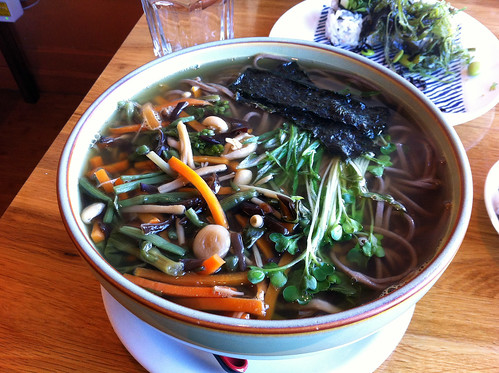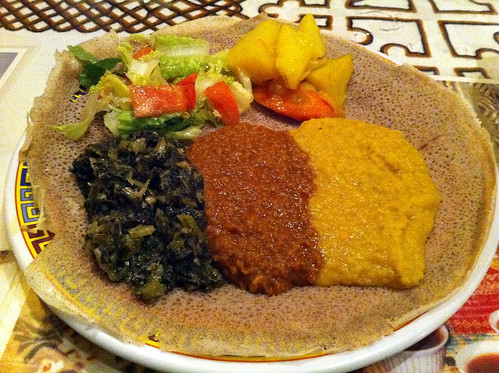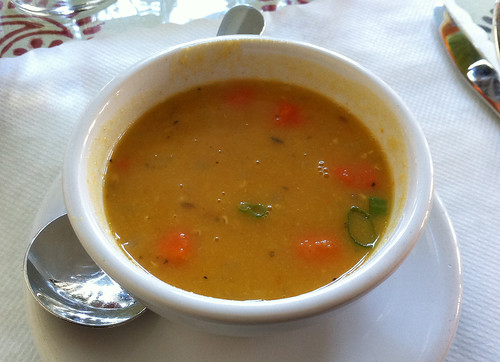Union Square isn’t the first place I think of when I eat out in San Francisco, especially if I’m craving sushi. But when my cousin recommended Akiko’s for a meal one evening, I thought, why not?
Akiko’s stays busy, so we’d made reservations for our weeknight dinner. We were quickly seated inside the small restaurant, and ordered from both their standard and special nama menu, featuring nigiri and sashimi flown in from Japan.
Our agedashi tofu arrived first, arranged artfully and topped with grated daikon radish. Agedashi tofu is silken tofu, lightly dusted with potato or cornstarch, deep-fried until golden brown, and served in a sauce of dashi, mirin and soy sauce. This version was crispier than the standard version, and more minimalist (the dish usually includes green onion and shaved bonito flakes), but still delicious.
Next came our selection from the nama menu: suzuki, shiro maguro, and smoked uni nigiri. This was my first time trying uni in smoked form, and the flavor was much stronger than I expected. I prefer the untouched version, but uni fans should still try this anyway, just to experience it. The shiro maguro, or white tuna, was mild and clean-tasting — just the way it should be. The suzuki, or sea bass, was my favorite: super fresh, and served with a light ponzu sauce.
Our volcano roll arrived last, and was essentially the opposite of our nigiri plate: rich, fried, and over the top. Made up of spicy salmon, salmon skin, crab, avocado, crunchy tempura, green onions, sesame, masago roe, and drizzled with a garlicy sauce, the volcano roll made the sushi purist in me cringe, but I’d be lying if I said it wasn’t delicious.
Service can be slow at Akiko’s, but it’s thorough and attentive. Just be sure to make reservations, even if you’re dropping by on a weeknight. Akiko’s may not be the most traditional sushi restaurant in the city, but I’m happy to know I can find a good roll or nigiri downtown, should I get the urge.









